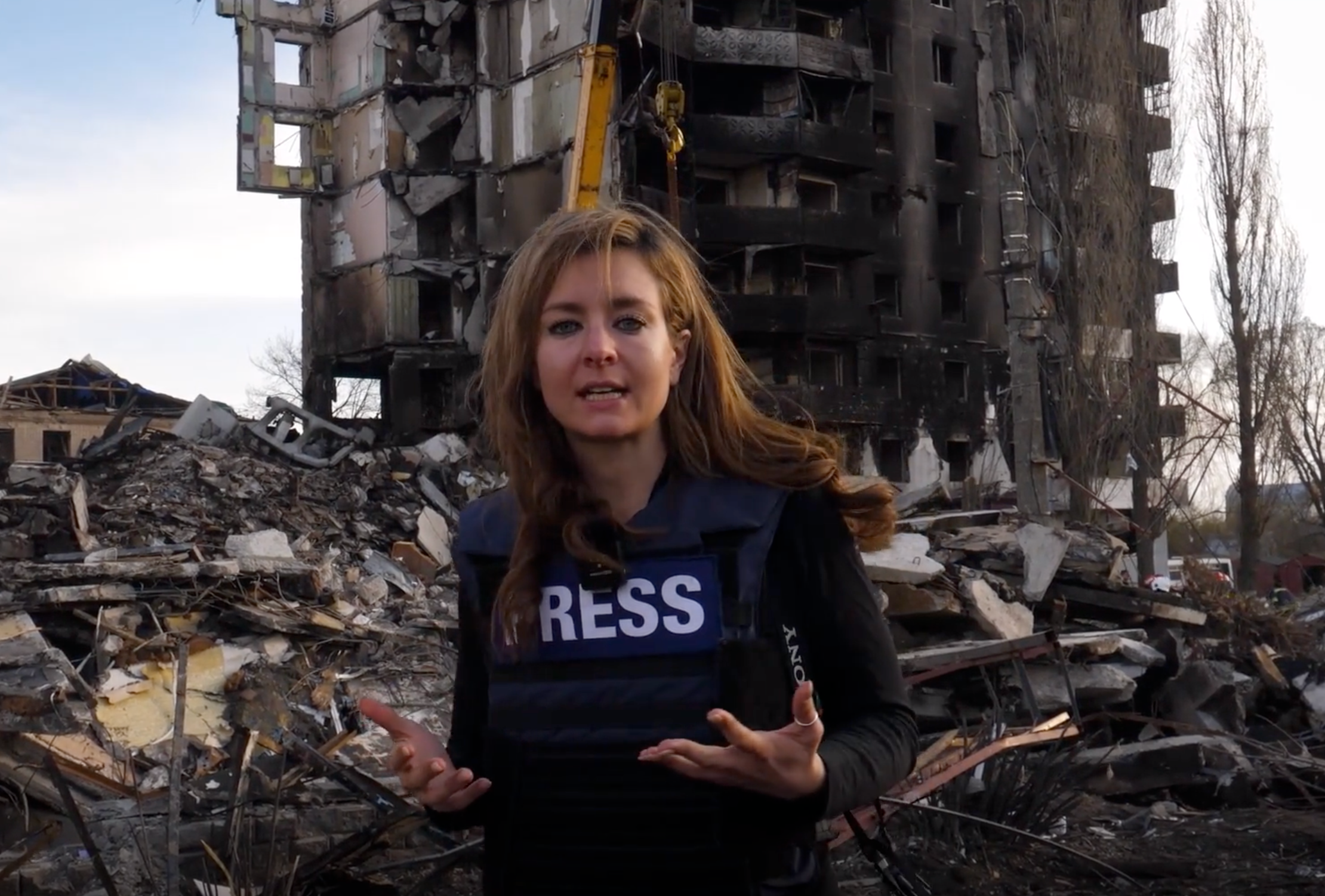How we bring you honest and impactful video reporting from Ukraine
It is the moral duty of those involved in the production process to reflect people’s stories accurately and with respect, writes Charlie Craven

By its nature, war is confusing. This is also true of war reporting. The latest episode of On The Ground examines only a fraction of the horrors being committed in Ukraine, but even that snapshot required enormous coordination.
While The Independent‘s video team were working safely at their desks in London, correspondents, translators and camera operators put themselves in danger to cover the events in Ukraine.
Our international correspondent, Bel Trew, spent more than a month reporting from the country, visiting over a dozen towns to build a picture of how this grotesque conflict was turning the lives of innocent civilians upside down.
The first few episodes of On The Ground filmed in Ukraine focused on those who were desperately trying to flee the country, and those who chose to stay behind and fight. But, as Ukrainian forces recaptured towns like Kharkiv and Bucha, a darker picture began to emerge. Patterns of abuse at the hands of Russian occupiers. Reports of mass graves. Sexual abuse.
As Bel continued her journey through these towns and cities, it became clear to us that it was important to collate the evidence into one film, to show through the first-hand accounts Bel was hearing that these weren’t isolated incidents committed by a few.
Pulling those accounts together wasn’t simple either. Bel performed heroics with her camera operator, Roman Ostrovskyi, to get their footage to us as they carried on their travels. Without reliable internet, 10 hours of footage had to be transferred through questionable-looking file transfer sites. Interviews were sent between the team in London, translators and then back for subtitling.
While journalists on the ground navigated bombed-out cities and abandoned Russian camps, the video team had to shape thousands of clips into a narrative that truly reflected what was happening in the country. We were simultaneously trying to balance creating a visually compelling video, with impactful, truthful journalism, while worrying about our colleagues and what they were doing for us.
But the real complexity of this video wasn’t really related to file transfers or translations, it was rooted in how we treated the civilians who took an enormous risk to talk to us.
It’s important to remember that the people featured in On The Ground – the man captured and tortured under a Ukrainian train station, the priest forced to dig mass graves for his murdered congregation – are more than just subjects in a video. They are human beings who have been subjected to some of the worst treatment imaginable, and once the cameras stop rolling, are left to pick up the pieces of their lives. Questions about which faces to blur or whether a particular shot of mass graves is too graphic are all important in making sure our interviewees are protected.
It is the moral duty of those involved in the production process to reflect these people’s stories accurately and with respect, and remember these are more than just stories. People have put themselves at risk of retaliation to share the worst moments of their lives.
Yours,
Charlie Craven
Video producer






Join our commenting forum
Join thought-provoking conversations, follow other Independent readers and see their replies
Comments